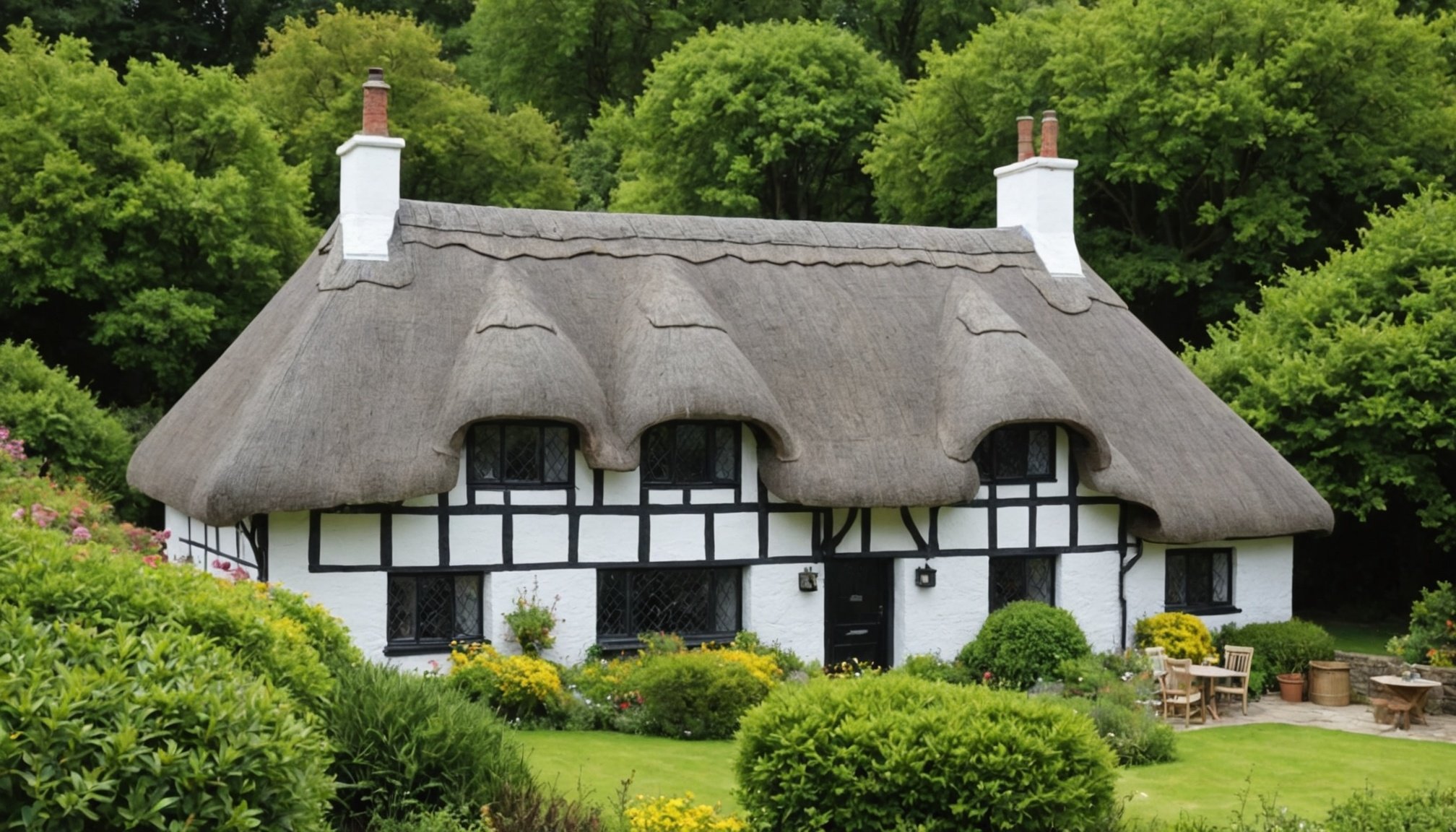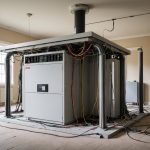Overview of Thatched Roof Homes in Devon
Thatched roofs are a distinctive feature of Devon architecture, reflecting the region’s rich cultural heritage. These roofs are traditionally made from straw, water reed, or rushes, which offer excellent insulation properties. However, maintaining them requires regular attention. Historically, they were the roofing method of choice before industrialisation introduced more modern materials. Their aesthetic appeal and eco-friendly nature have kept them popular among homeowners despite potential challenges.
Homeowners of thatched properties face unique challenges due to the materials’ susceptibility to fire, rot, and pest infestations. Weather conditions can also impact these roofs’ longevity, making regular checks and necessary repairs crucial. Understanding these risks is essential for those considering or owning a thatched home to adequately prepare for upkeep.
Dans le meme genre : Essential Home Features for Disability-Friendly Living in Manchester: What to Consider
One critical factor for thatched roof homeowners is adequate home insurance, tailored specifically for their needs. Standard home insurance policies often fail to cover the specific requirements of thatched roofs, such as specialist repairs. Insurers must assess the condition of the roofing material and address fire safety measures. It is, therefore, advantageous for homeowners to seek out insurance providers experienced in handling thatched properties to guarantee comprehensive protection.
Types of Insurance for Thatched Roof Homes
When considering home insurance for thatched roof residences, understanding the difference between standard and specialized coverage is crucial. Traditional home insurance policies might not fully accommodate the unique needs associated with thatched roofs. These structures are often more susceptible to fire risks and weather-related damage due to their materials and construction methods. Therefore, seeking specialized coverage becomes essential for comprehensive protection.
En parallèle : Essential Security Strategies for Protecting Your Home in London”s High-Crime Areas
Insurers well-versed in the intricacies of thatched homes can offer policy types that specifically address these vulnerabilities. Such policies often include higher premiums, reflecting the increased risk. Yet, the peace of mind provided by knowing your home is adequately covered is invaluable.
Beyond structural insurance, additional coverage options such as contents insurance ensure that your personal belongings within the home are also protected. Liability insurance is another vital facet, safeguarding you against claims should any harm occur to others on your property. Choosing the right combination of these options through a specialized coverage provider can make a significant difference in how well-protected your home and its contents are, offering tailored solutions to fit individual needs.
Factors Affecting Insurance Premiums
Many variables contribute to the insurance premiums for a property with a thatched roof. A crucial aspect is the condition and age of the roof itself. Older roofs often require more maintenance, which can lead to increased premium costs. Frequent inspections and timely repairs will mitigate this risk, potentially lowering premiums.
In addition to the thatched roof’s condition, the location and proximity to fire services significantly influence risk assessment. Properties closer to fire stations typically benefit from lower premiums. This is because the swift response times decrease the likelihood of extensive damage, thus reducing the risk perceived by insurers.
Insurance providers also play a pivotal role in determining premiums through their guidance in assessing risk and setting coverage limits. They usually offer advice tailored to individual circumstances, such as installing fire retardants or implementing other safety measures, which can effectively manage and minimise potential risks, thereby impacting premium costs positively. This personalised guidance assists in achieving a balance between adequate coverage and affordable premiums, ensuring the policyholder is well protected without unnecessary expense.
Coverage Specifics for Thatched Roofs
When considering insurance for thatched roofs, understanding the peculiarities of coverage is crucial. Thatched roof properties often involve unique clauses to address their specific risks. A prominent coverage detail is the mandatory inclusion of fire safety features, such as proximity to water sources or incorporation of fire retardant treatments.
Special considerations also extend to maintenance requirements. Policyholders must often ensure regular inspections and upkeep to remain compliant with their insurance policy. Such measures are to mitigate risks associated with the distinctive materials and crafting techniques employed in thatched roofing.
A noteworthy aspect is the potential policy exclusions. Insurance providers might exclude coverage for damage resulting from poor maintenance or improper repairs. Hence, it is significant to scrutinise terms regarding upkeep obligations diligently.
Another critical consideration is the comprehensive understanding of policy exclusions and limits. Misinterpretations can result in unexpected financial liabilities. Insurance for thatched roofs might not cover certain natural disasters unless explicitly stated, so clarity on all confined elements of the coverage is paramount.
Lastly, the scope of insurance should be carefully evaluated. Knowing precisely what circumstances are included or excluded can help to make informed decisions, ensuring your thatched roof property is adequately protected.
Local Regulations and Compliance
When it comes to thatched roofs, it’s essential to be aware of the building regulations in your area. In Devon, local policies govern the construction and maintenance of such roofs. These regulations ensure not only the charm and tradition of thatched properties but also their safety and durability.
Understanding and complying with these policies is crucial for anyone owning or considering a thatched property in Devon. Compliance with building codes is a significant factor in becoming eligible for insurance coverage. Without meeting these requirements, securing insurance can become incredibly challenging, leaving homeowners at risk of uncovered damages or liabilities.
Moreover, local authorities play a vital role in the insurance application process. They’re responsible for approving that properties meet necessary standards and compliance. This can include inspections and requiring proof that all relevant building regulations have been followed. Meeting these standards not only offers peace of mind but also enhances the value and insurability of the property.
To navigate these complexities, property owners should engage with local councils and authorities, ensuring they are aware of all necessary compliance obligations. By doing so, they safeguard their investment and uphold the quintessential charm of their homes.
Choosing the Right Insurance Provider
When considering insurance providers, it’s crucial to evaluate certain key factors before making a decision. First, assess the insurer’s financial stability and customer service reputation. These aspects can greatly influence your claim experience. It’s also wise to seek recommendations from other homeowners with similar properties, such as those with thatched roofs. Their firsthand experiences can provide valuable insights into which companies are reliable and responsive to unique coverage needs.
Furthermore, taking the time for a comprehensive policy comparison is essential. By obtaining multiple quotes and reviewing the details of each policy, you’ll ensure that you have a clear understanding of your coverage options. This process not only involves comparing premiums but also examining the specifics of what’s included and excluded.
- Consider the company’s claim processing efficiency.
- Examine customer reviews and ratings to understand their service quality.
- Evaluate any additional services they might offer.
Ultimately, the goal is to find an insurance provider that offers both competitive rates and comprehensive coverage tailored to your specific homeowner requirements.
Claims Processes for Thatched Roof Homes
Navigating the claims process for thatched roof homes can be daunting, but understanding each step can ease the journey. First and foremost, assess and document the damage promptly. Photographs are crucial. Then, contact your insurer to initiate the filing claims procedure.
Step-by-step Guide:
- Document the Damage: Capture clear images of the damage.
- Contact Your Insurer: File the claim swiftly to avoid delays.
- Insurance Assessment: An adjuster will inspect and estimate repair costs.
- Approval and Repairs: Once approved, repairs can commence.
While tackling claims, it’s important to avoid common pitfalls. In Devon, underestimating minor damage or missing deadlines can significantly prolong the process. Thoroughly check your insurance assistance covers all potential damages specific to thatched roofs, such as fire and water.
For those facing claims challenges, various resources and support systems are available. Homeowners can access insurance assistance helplines for guidance and council programs that offer advice on their rights and obligations. Tap into local forums where others share their experiences and recommendations regarding reliable professionals for restoration. By understanding the procedural nuances and potential hurdles, homeowners can facilitate a smoother claims journey.
Preventative Measures to Maintain Insurance Eligibility
Preventative maintenance is crucial in maintaining your home’s insurance eligibility. By regularly scheduling routine inspections and repairs, you significantly reduce the risks associated with property damage. Central to this maintenance is conducting bi-annual roof inspections, which help identify minor issues before they escalate. Replacing worn shingles or fixing minor leaks promptly ensures your roof remains in compliance with insurance standards.
Proper documentation plays a vital role here. Keeping detailed records of all maintenance and repair activities can assist you immensely when dealing with insurers. This not only demonstrates your commitment to risk reduction but also provides tangible proof to support your insurance claims if needed.
Importantly, focus on:
- Regular roof inspections and timely repairs
- Keeping all receipts and reports as evidence
- Utilizing licensed professionals for repairs
Embracing such practices not only bolsters your home’s structural integrity, but also offers peace of mind, knowing your insurance eligibility is safeguarded. Ensure that any updates or changes to your property are promptly reported to your insurer, as transparency aids in smoother claim processes. Remember, maintaining a proactive approach to preventative maintenance is often more cost-effective than emergency interventions following damage.











